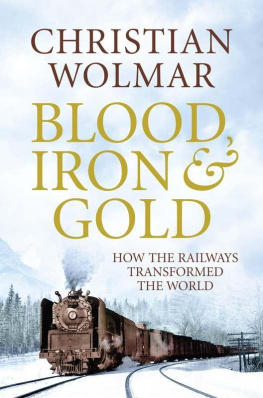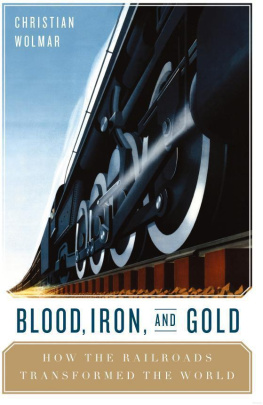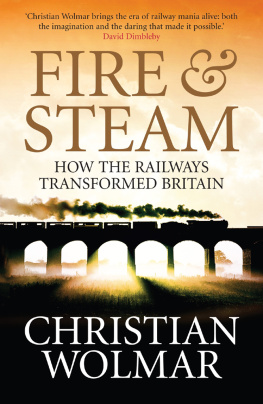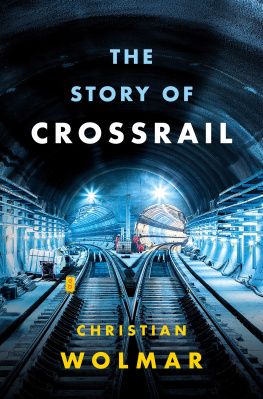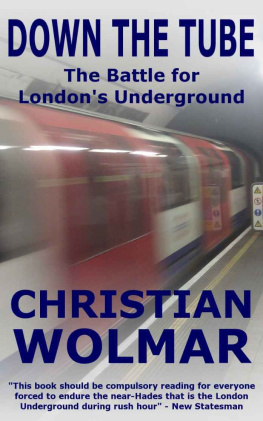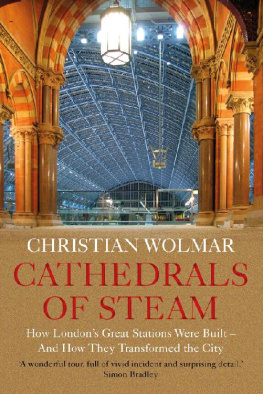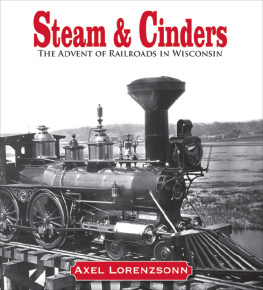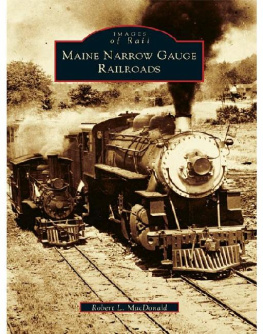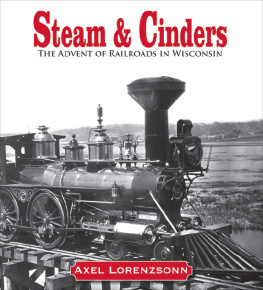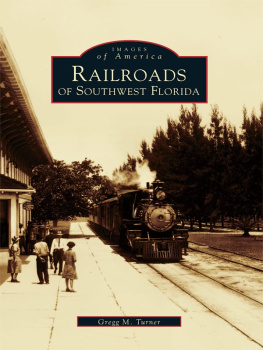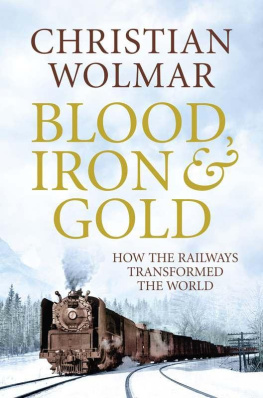Christian Wolmar - Blood, Iron, and Gold: How the Railways Transformed the World
Here you can read online Christian Wolmar - Blood, Iron, and Gold: How the Railways Transformed the World full text of the book (entire story) in english for free. Download pdf and epub, get meaning, cover and reviews about this ebook. City: London, year: 2010, publisher: Atlantic;PublicAffairs, genre: Politics. Description of the work, (preface) as well as reviews are available. Best literature library LitArk.com created for fans of good reading and offers a wide selection of genres:
Romance novel
Science fiction
Adventure
Detective
Science
History
Home and family
Prose
Art
Politics
Computer
Non-fiction
Religion
Business
Children
Humor
Choose a favorite category and find really read worthwhile books. Enjoy immersion in the world of imagination, feel the emotions of the characters or learn something new for yourself, make an fascinating discovery.
- Book:Blood, Iron, and Gold: How the Railways Transformed the World
- Author:
- Publisher:Atlantic;PublicAffairs
- Genre:
- Year:2010
- City:London
- Rating:3 / 5
- Favourites:Add to favourites
- Your mark:
Blood, Iron, and Gold: How the Railways Transformed the World: summary, description and annotation
We offer to read an annotation, description, summary or preface (depends on what the author of the book "Blood, Iron, and Gold: How the Railways Transformed the World" wrote himself). If you haven't found the necessary information about the book — write in the comments, we will try to find it.
This spirited, dramatic history of the most important invention of the second millennium celebrates railroads as the central innovation of the industrial revolution, releasing economic and social energies on a stupendous scale. Historian Wolmar (_The Great Railway Disaster_) chronicles the heroic age of railroad construction in the 19th century, with its mix of epic engineering and horrible exploitation. (The death toll on the trans-Panamanian railroad project included a mass suicide by Chinese workers.) Riding the early railroads, he notes, was almost as harrowing as building them, as passengers braved engine cinders that set their clothes on fireand sometimes had to get out and push underpowered locomotives up steep grades. The railroads social impact was equally breathtaking, in Wolmars telling: it brought city folk fresh milk, out-of-season produce, and commutes to the suburbs; spawned monopolies and spectacular corruption scandals; and played a crucial role in enabling the world wars and the Holocaust. Wolmar explores this fertile subject with a blend of lucid exposition and engaging historical narrative. The result is a fascinating study not just of a transportation system, but of the Promethean spirit of the modern age. 16 pages of color illus.; maps. (Mar. 2)
Copyright Reed Business Information, a division of Reed Elsevier Inc. All rights reserved.
Richard F. Harnish, Executive Director, Midwest High Speed Rail Association
_Blood, Iron, and Gold_ reminds us that the railroads did more than just speed up travel or build up national economies. They literally changed the way human beings experienced, thought about and lived their lives. Christian Wolmars book should put all high-speed-rail advocates on notice. Trains can return to the American landscape, traveling twice as fast, reprising the social revolution they set off almost two centuries ago.
Library Journal STARRED Review
[Wolmars] work is both a serious history and an adventure story. Highly recommended for anyone interested in the growth and global historical impact of railroads.
Publishers Weekly
Wolmar explores this fertile subject with a blend of lucid exposition and engaging historical narrative. The result is a fascinating study not just of a transportation system, but of the Promethean spirit of the modern age.
Wall Street Journal
[Wolmar] covers a great deal of territory in Blood, Iron and Gold, but he keeps the reader engaged by highlighting extraordinary projects like the building of the Trans-Siberian Railway from 1891 to 1904. It connected St. Petersburg to Vladivostok, a distance of almost 6,200 miles. Equally stirring is the saga of Cecil Rhodes and his never-completed Cape-to-Cairo line; and that of Perus vertiginous Central Railway, which ascends the Andes and passes through the Galera Tunnel, 15,694 feet above sea level. The book also features cameo appearances by such colorful figures as Benito Mussolini, who may or may not have made Italys trains run on time but who definitely made them run faster and more frequently. Nor does Mr. Wolmar neglect the pop-culture angle: Agatha Christie fans will be sorry to learn that history records no instance of a real-life murder on the Orient Express.
Dallas Morning News
Its not clear who first thought of putting carts and carriages on flanged wheels and hauling them over iron rails behind steam engines. But the railroad, writes transportation historian Christian Wolmar, changed everything. And he means everything....Its a vast geopolitical story, but Wolmar manages to tell it without losing sight of the romance and adventure, the triumphs and frequent tragedies that accompanied the advancing rails.
Trains Magazine
Most attempts at a generalist approach toward railroad history err on the side of history and slight the rail side. (_Blood, Iron, and Gold_) keeps the two elements in graceful balance. And, thanks to Wolmars crisp style, its a pleasure to read.
From Publishers Weekly
This spirited, dramatic history of the most important invention of the second millennium celebrates railroads as the central innovation of the industrial revolution, releasing economic and social energies on a stupendous scale. Historian Wolmar (_The Great Railway Disaster_) chronicles the heroic age of railroad construction in the 19th century, with its mix of epic engineering and horrible exploitation. (The death toll on the trans-Panamanian railroad project included a mass suicide by Chinese workers.) Riding the early railroads, he notes, was almost as harrowing as building them, as passengers braved engine cinders that set their clothes on fireand sometimes had to get out and push underpowered locomotives up steep grades. The railroads social impact was equally breathtaking, in Wolmars telling: it brought city folk fresh milk, out-of-season produce, and commutes to the suburbs; spawned monopolies and spectacular corruption scandals; and played a crucial role in enabling the world wars and the Holocaust. Wolmar explores this fertile subject with a blend of lucid exposition and engaging historical narrative. The result is a fascinating study not just of a transportation system, but of the Promethean spirit of the modern age. 16 pages of color illus.; maps. (Mar. 2)
Copyright Reed Business Information, a division of Reed Elsevier Inc. All rights reserved.
Richard F. Harnish, Executive Director, Midwest High Speed Rail Association
_Blood, Iron, and Gold_ reminds us that the railroads did more than just speed up travel or build up national economies. They literally changed the way human beings experienced, thought about and lived their lives. Christian Wolmars book should put all high-speed-rail advocates on notice. Trains can return to the American landscape, traveling twice as fast, reprising the social revolution they set off almost two centuries ago.
Library Journal STARRED Review
[Wolmars] work is both a serious history and an adventure story. Highly recommended for anyone interested in the growth and global historical impact of railroads.
Publishers Weekly
Wolmar explores this fertile subject with a blend of lucid exposition and engaging historical narrative. The result is a fascinating study not just of a transportation system, but of the Promethean spirit of the modern age.
Wall Street Journal
[Wolmar] covers a great deal of territory in Blood, Iron and Gold, but he keeps the reader engaged by highlighting extraordinary projects like the building of the Trans-Siberian Railway from 1891 to 1904. It connected St. Petersburg to Vladivostok, a distance of almost 6,200 miles. Equally stirring is the saga of Cecil Rhodes and his never-completed Cape-to-Cairo line; and that of Perus vertiginous Central Railway, which ascends the Andes and passes through the Galera Tunnel, 15,694 feet above sea level. The book also features cameo appearances by such colorful figures as Benito Mussolini, who may or may not have made Italys trains run on time but who definitely made them run faster and more frequently. Nor does Mr. Wolmar neglect the pop-culture angle: Agatha Christie fans will be sorry to learn that history records no instance of a real-life murder on the Orient Express.
Dallas Morning News
Its not clear who first thought of putting carts and carriages on flanged wheels and hauling them over iron rails behind steam engines. But the railroad, writes transportation historian Christian Wolmar, changed everything. And he means everything.Its a vast geopolitical story, but Wolmar manages to tell it without losing sight of the romance and adventure, the triumphs and frequent tragedies that accompanied the advancing rails.
Trains Magazine
Most attempts at a generalist approach toward railroad history err on the side of history and slight the rail side. (_Blood, Iron, and Gold_) keeps the two elements in graceful balance. And, thanks to Wolmars crisp style, its a pleasure to read.
Christian Wolmar: author's other books
Who wrote Blood, Iron, and Gold: How the Railways Transformed the World? Find out the surname, the name of the author of the book and a list of all author's works by series.

